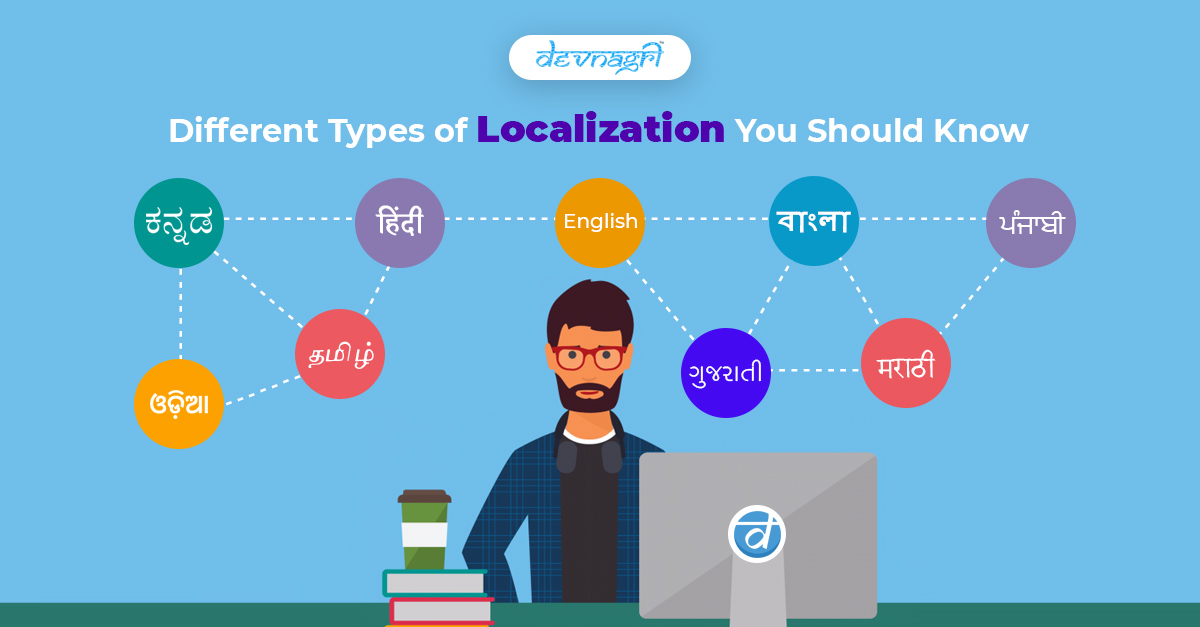
[:en]
What is Localization?
Localization is similar to translation but differs because it adapts a piece of material to the target locale’s language and cultural preferences. Because of localization, the product receives a new version that is more user-friendly for the target audience and seems to have been designed just for them.
Language, culture, keyboard use, traditions, monetary forms, typefaces, graphics, date, time, and other related aspects of the target market are all considered.
On the other hand, translation is a step in the localization process that involves translating words or phrases from one language to another. For other reasons, there are many kinds of localization.
To make the process work, you will need to know exactly what your company requires.
Also Read: Five Things To Consider When Buying A Translation API For Your Business Use
Some of the many different types of localization are listed below –
Website Localization
This is the initial point of contact for a prospective client with your company. Therefore, if they click on it and discover a foreign language, they are likely to go on.
Even worse, you might have translated the website but not localized it. A natural reader can usually tell the difference between the two activities.
Your company should engage in website localization to prevent such expensive errors. Localization of a website entails more than just text translation. The visuals on the website must also meet the communicative and cultural requirements.
The website’s tone should also be appropriate for the intended demographic. Aside from this, the website’s localization should also take into account cultural considerations.
Getting the scripts correct is an essential aspect of localizing a website. This will include bringing the translated scripts into line with the source codes. The original’s website, visuals, rules, and message should all be compatible.
Also Read: Different Types of Translation You Should Know
Software Localization
This is a popular kind of localization for both apps and video games. Localization of software necessitates the replacement of all material components.
This comprises, for example, source codes, images, the user interface, and documentation. You’ll need to create a localizable user interface to make this procedure work.
This implies that all components that are visible to the user must be localizable. Currency, dates, and times are all included in this data.
Having the information outside the source codes is a great approach to make things simple to localize. This will make changing the external codes to the required languages easier.
Also Read: Website Localization and Website Translation — What Is Difference?
Multimedia Localization
This is the process of converting audio or video files into their native language. Music, videos, movies, e-learning material, and advertising are examples of this kind of content.
When it comes to reaching a larger audience, multimedia localization is critical. This is because multimedia is rapidly becoming the primary source of information.
To keep up, more applications are integrating video and audio capabilities. Dubbing, voice-overs, and subtitling are examples of multimedia localization procedures. On-screen translations are also used in particular films to convey the message.
There are many stages involved in multimedia localization. These begin with the translation of the screenplay and end with the recording of voice-overs.
After that, the professionals synchronize the voice overs before moving on to the visuals. The quality of the video is then compared to the original.
Also Read: What You Should Know Before Selecting Document Translation Services
Product Information Localization
This is what you do when you are attempting to break into a new market with a product. To make this work, you will need to translate all of the product’s details.
This contains all product details such as contents, manuals, and technical support. Everything about your product that someone would want to know should be accessible.
People are more likely to buy in if product information is presented in an easy-to-understand manner. Website localization will increase your company’s chances of success in a new market.[:]





